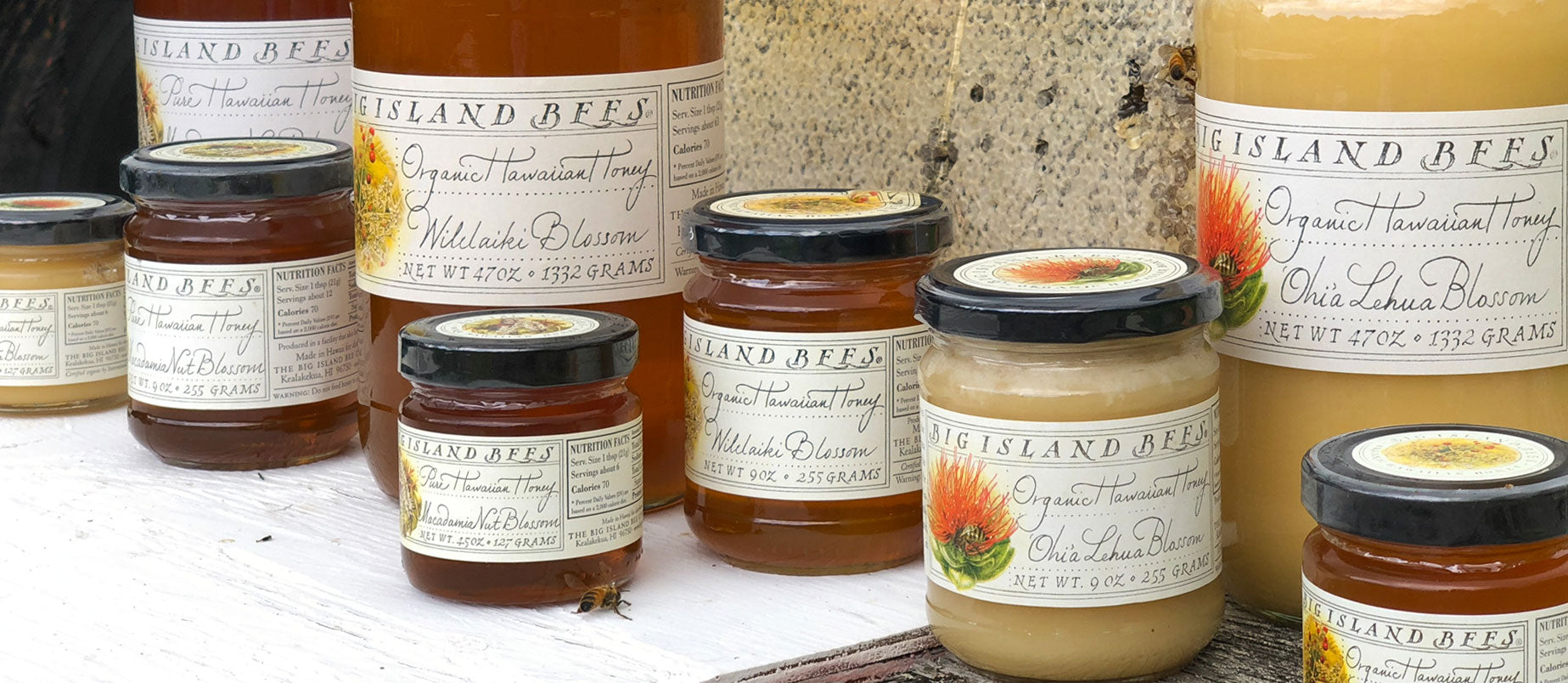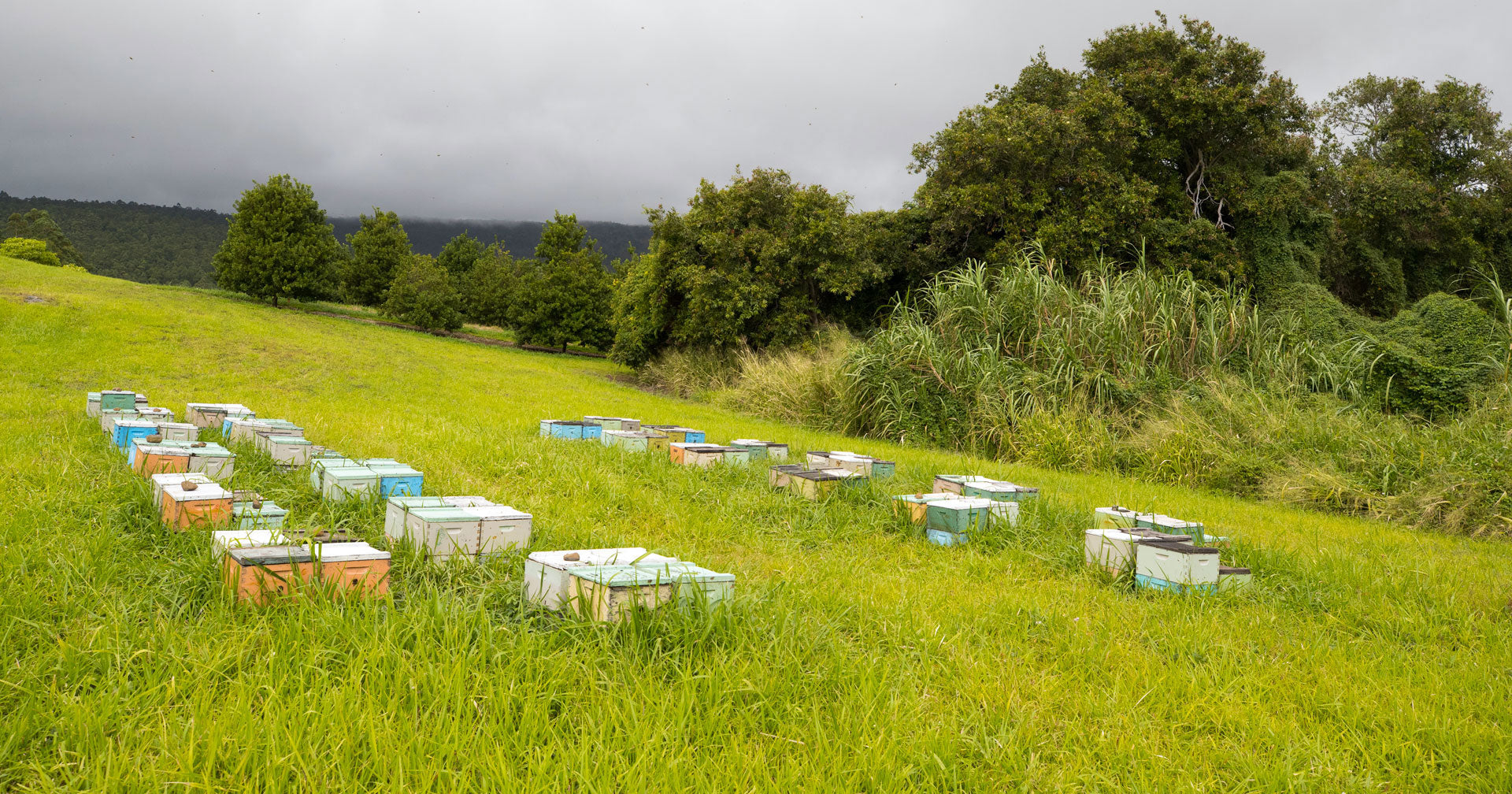When choosing honey you have likely come across labels that use words like “raw,” “pure,” “organic,” and “unfiltered” – but you may be left asking what exactly the difference is. In many cases honey can be more than one of these things, but they each mean something different, and knowing which is which helps you choose the healthiest and best tasting honey. To make it easier to understand the different kinds of honey, we explain the generally accepted definitions for each kind of honey:
Pure Honey: A “pure honey” label means that you are getting 100% honey, without any other ingredients (such as corn syrup, which is sometimes added to industrial honey to reduce costs). However “pure” honey alone doesn’t always tell you much about the varietal or how the honey is produced, so it’s good to look for more information to make sure you’re getting all the benefits you can from honey when it’s produced in the most bee- and environment-friendly way.
Raw Honey: The difference between raw honey and pure honey is that in addition to being pure, “raw” honey has not been heated to the point of pasteurization (no higher than 118°F). The benefit of not heating honey is that the naturally-occurring enzymes, vitamins and minerals are preserved and you get the full benefits of them from eating raw honey. Many beekeepers who produce raw honey are also aware that how they care for the bees and handle the honey has a big impact on the honey you eat, so it’s a good bet that raw honey is good for the bees too and the process has been handled with care. If you have the choice between raw honey vs regular honey, raw honey is a better choice for health, taste, bees and the environment.
Organic Honey: Organic honey is produced from the nectar of organically grown plants, and without chemical miticides to treat the bees. Buying organic honey ensures that you avoid contact with pesticides that may be sprayed on or near the plants visited by honeybees. Of course, bees usually fly up to 2 miles from the hive looking for flowers, which means that all the flowers within this 2-mile radius must be certified organic in order for the honey to truly be organic. As you would expect this can be difficult to control, but an Organic certification is a good way you can be sure the apiary is taking care to ensure it. It’s also important to remember that honey labeled “organic” is not necessarily raw or minimally processed unless labelled as such. Much of the certified organic honey available in the United States is imported in large quantities from Brazil or other foreign countries and undergoes pasteurization and heavy filtration. Look for both raw and organic on the label.
Unfiltered Honey: “Filtering” honey means processing the honey to remove very small particles, often even as small as the pollen. Filtering honey is not the same as straining honey, which is commonly done to remove bee parts and other large debris prior to jarring while still retaining the pollen and other beneficial qualities of honey. With filtration, honey is also often heated to become more liquid in order to make the filtering process easier, meaning that the honey is no longer raw. Therefore, unfiltered honey is not necessarily raw unless labelled so, but it will be closer to its state straight from the hive than honey that has been filtered. Choosing raw unfiltered honey ensures the most properties have been preserved.
What Honey to Buy: Knowing what these words mean will help you choose the best honey for you and for the environment. Unfortunately there is little regulation on honey labelling, so it can be difficult to know for sure by these claims on labels alone. If you’re looking for the least processed honey or honey that most closely resembles its natural form in the hive, the best thing is to look for small, artisanal honey producers who are transparent about their production processes. Try visiting your local farmers market, checking natural foods shops, or visiting grocery stores that carry a good variety of honey.
You can also find high quality pure, raw, unfiltered and organic honey online at bigislandbees.com/collections/all-products. We produce three unique varietals on the Big Island of Hawaii, where we carefully tend to our own hives without the use of artificial feeds or chemical miticides. This care is then preserved by a slow and deliberate packing operation without the use of heat or filtration.



